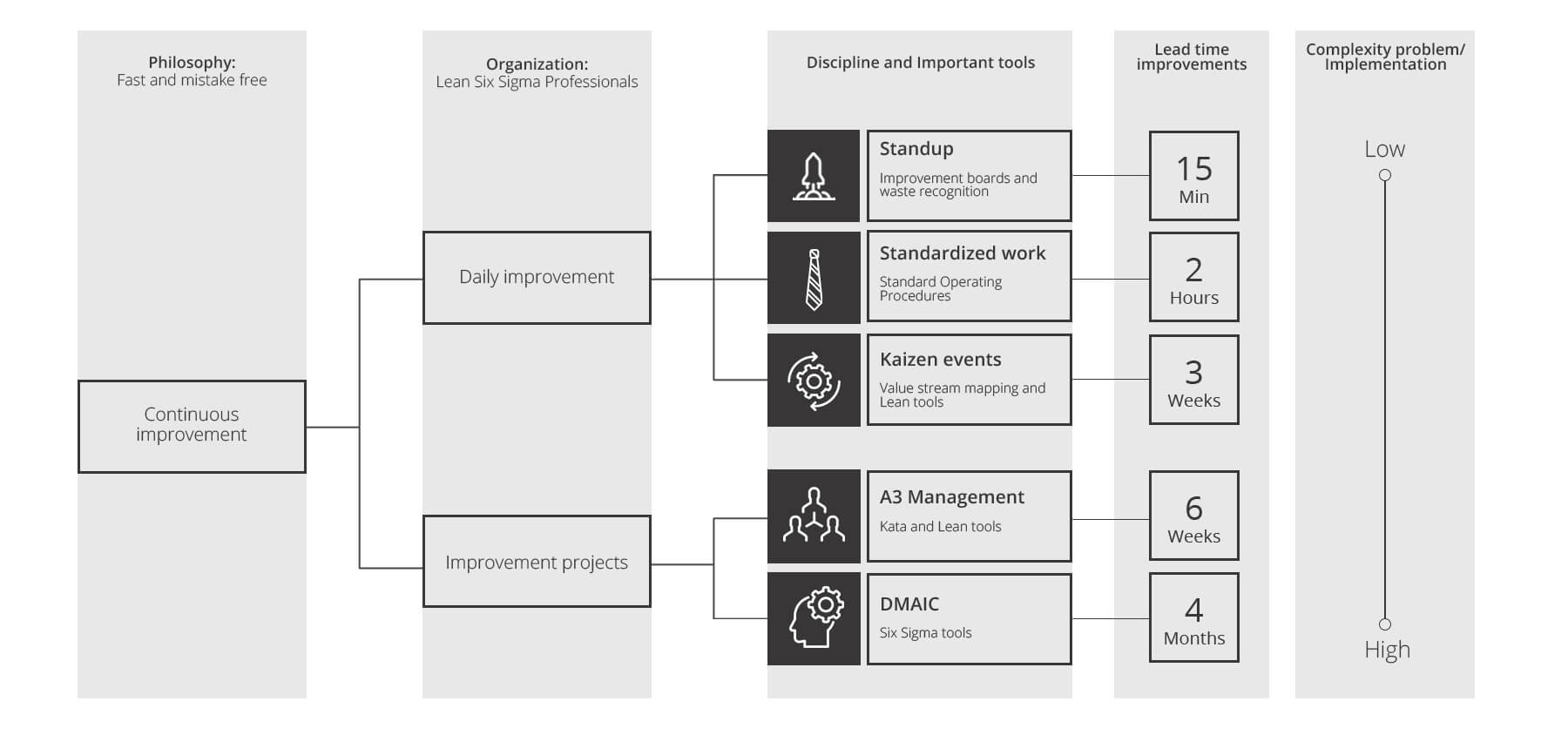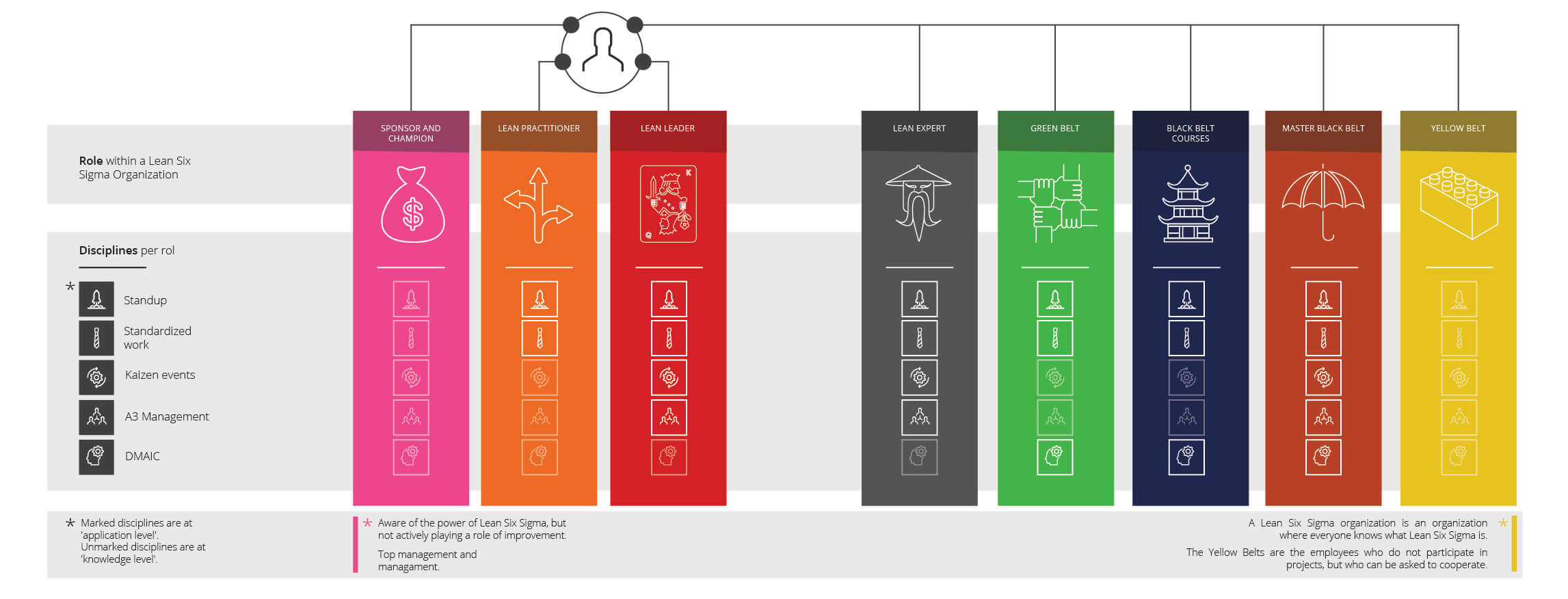In-company.
Lean Six Sigma in your company
Although Lean Six Sigma is best known as a project-based improvement structure, but Lean Six Sigma is much broader than that. Lean Six Sigma is an established philosophy, an organisational and improvement structure as well as a set of tools. Using this perspective Lean Six Sigma addresses organisational issues with respect to competitiveness, cost reduction, and customer satisfaction.
Depending on your ambition, Lean Six Sigma can be implemented in phases. Every organisation is unique, without a common blueprint that universally applies. Together with you, The Lean Six Sigma Company can develop a plan of action tailored to your organisation.
Would you like to know more about Lean Six Sigma? Please read the following: What is Lean Six Sigma?
An integrated approach to running a business
Lean Six Sigma helps you strive towards three goals: higher customer satisfaction, lower operating costs and a competitive advantage through high quality. These three goals relate to each other. The basis of Lean Six Sigma is a philosophy, namely fast and flawless work. In technical jargon, it means striving for a one-piece-flow and variation reduction.
In a Lean Six Sigma organisation, people deal with process improvement by conducting improvement projects as well as continuously improving daily routine. This requires an organisation which understands the methodology. Management plays an important role in Lean Six Sigma’s success. They are the sponsors of the improvement initiatives and are therefore jointly responsible for their success. The sponsors select projects and ensure the elimination of any obstacles so Lean Six Sigma can be applied successfully.
The diagram below shows Lean Six Sigma as an integrated approach to running your business:

The first step: Determine the ambition
Years of experience have shown us that an organisation can pursue three levels of ambition when it comes to process improvement. The highest level, ‘Change’, is often called Operational Excellence. Organisations like General Electric (GE) and Toyota are companies that operate at this level. Process Improvement according to the Lean Six Sigma methodology is embedded in the DNA of these organisations. They make no secret of the fact that Lean Six Sigma played a pivotal role in becoming industry leaders.
Another level of ambition is the ‘Improve’ approach. This level of ambition is characterised by selective improvement within the organisation. They make the decision to optimise a number of departments, core processes or units using Lean Six Sigma. Often initiated by the departments themselves, without senior management actively getting involved.
The third level of ambition is called ‘Repair’. At this point, Lean Six Sigma is brought in to improve a number of processes. Consultants are hired or certain staff members are trained to improve a limited number of processes.
Determining your level of ambition strongly depends on your available resources and your needs. Every level of ambition has its own implementation path. This path is also strongly dependent on the type of organisation. That is why there is no blueprint for implementing Lean Six Sigma. However, The Lean Six Sigma Company can, with your cooperation, definitely give thought to the right approach and route to success.

Roles and responsibilities
An organisation which applies continuous improvement will have a large number of process ‘improvers’, who focus on process improvement on a part-time or even full-time basis , in order to keep costs low and increase customer satisfaction. Within a Lean Six Sigma organisation, the various roles engage with the five disciplines. The more intensely staff has been trained, the more disciplines he/she can fulfill. Process ‘improvers’ are necessary at every level. The different roles are listed below:
